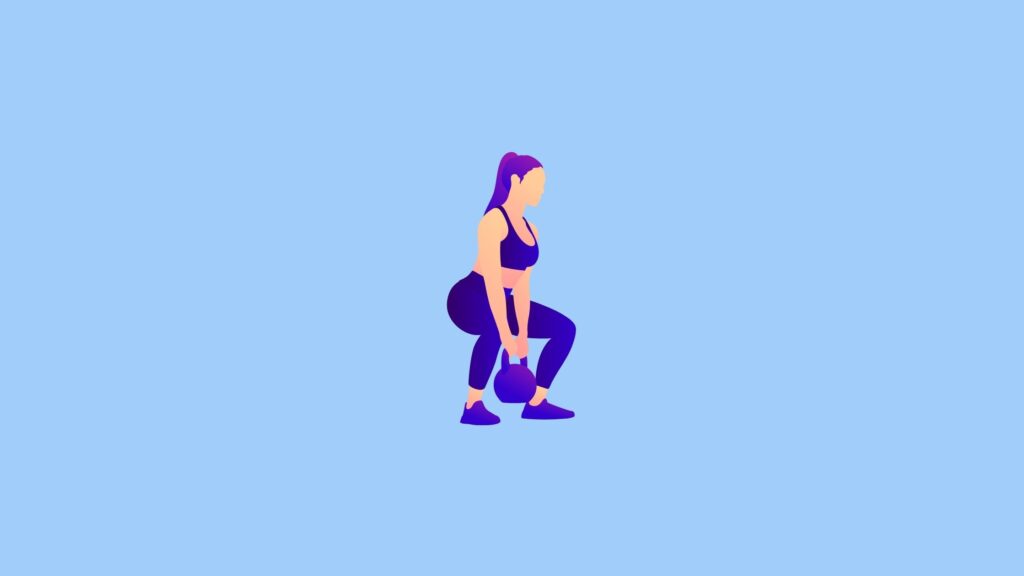Strength training for beginners doesn’t need to be confusing or complicated. If you want to build muscle and get toned, it’s actually very simple, but only if you do it correctly. It can be overwhelming trying to find out how to get started. This is why I created the strength training beginner’s guide.
What exactly is strength training? Who should do it? How do you get started if you have no idea where to begin?
I’m going to answer all of these questions as well as give you some free workouts to get started. All I ask of you is to read every single syllable. Don’t skip around. Let’s get started.
Benefits Of Strength Training
Did you know that you can get strong at any age? Building muscle and prioritizing strength training should be the focus of the majority of your workouts. Here are some of the many benefits to regular strength training:
- Burning more calories at rest
- Improved joint and bone health
- Better mobility as you age
- More self confidence
- Elevated body image
- Maintaining muscle mass as you age
This is by no means an exhaustive list, but if you truly want to build an amazing body that you are proud of, there is no better way to do it than heavy strength training.
Strength Training Beginner’s Guide
Strength Training Vs. Cardio
Walk into a corporate gym like Planet Fitness, and you will see 80% of the gym floor taken up with cardio machines. I get it. It’s much less intimidating jumping on a treadmill than grabbing a pair of dumbbells.
Contrary to popular belief, strength training can be done in just a few hours per week, and everyone should be doing it.
If fat loss is your goal, you should be prioritizing strength training over cardio. Don’t get me wrong here, cardio should still be implemented regularly for overall health. You should definitely do both. I am saying, however, that there are specific reasons why weight lifting is going to get you to your goals, not cardio alone.
- Getting “toned” comes from the word “muscle tone”. This means in order to get a lean physique where you have visible muscle tone, you have to actually spend some time building muscle.
- If you already have some muscle, being in a calorie deficit puts you at risk of losing that muscle. The more intense cardio you do, the higher chance you will be losing precious muscle tissue. That is, unless you swap some of that cardio out, and strength train effectively.
- The more muscle you have, the more calories you burn at rest. This means you can lose fat eating more food, which makes dieting so much easier.
Your body actually adapts to the number of calories that you are burning through activity. This means that if you are burning 400 calories on the treadmill, eventually your body will adapt to that amount. So if you were losing weight doing that much cardio, you will only have to keep increasing over time. This is not sustainable, nor is it a good idea if you plan on being in a fat loss phase for several months.
Strength Training Beginner’s Guide
Strength training: Will it make you bulky?
When I first started with my online coaching client Sara, I told her we were going to start strength training 3 times per week.
“I don’t wanna get too bulky. I just want to get toned.”
This is not an uncommon response from most women I’ve worked with. I don’t blame them…they don’t wanna be out here looking like Chyna.

Images of jacked female CrossFit athletes may come to mind, making most women afraid of ever doing a heavy deadlift in their entire life.

The thing is though, when most women start strength training they are not going to just magically blow up overnight.
It takes top-tier muscle-building genetics, an absolutely dialed-in nutrition regimen, and oftentimes steroids to look like this.
The truth is, most women I’ve worked with who have trained for 5+ years consistently are healthier and more confident on average than those who are just constantly trying to get skinny.
Not to mention, trying to get skinny is usually a neverending cycle of gaining and losing the same 20 pounds every year.
When you start strength training and prioritizing building muscle, your clothes are going to fit better. Your confidence that you exude in the gym is going to translate to every other area of your life. Most importantly, you are going to stop fixating on a number on the scale, and start chasing numbers in the gym. This changes your whole negative mindset with constantly trying to lose weight and spinning your wheels. You start focusing on performance, getting strong, and killing your negative self-talk and limiting beliefs.
Hopefully, now you are getting excited to get into strength training and learn exactly how it’s done.
Strength Training Beginner’s Guide
Sets and Reps Explained
A set is the number of cycles or rounds you perform a specific exercise. If your workout program said:
Squats 3×8
This would mean you would be performing 3 sets of squats.
A rep is how many times that exercise is performed within a given set.
In the example above, you would be performing 8 reps. You would do 8 squats per set, usually with a rest in between.
Strength Training Beginner’s Guide
Rest Times Explained
Without getting too sciencey here, (remember this article is for beginners), you should always be resting in between your sets while strength training.
I usually recommend anywhere between 1.5 to 3 minute rest times for most lifts, and put those rest times into my client’s programs.
So why do you rest longer for some exercises?
Some exercises require more recovery time. For example, doing a set of heavy squats requires a lot of energy from your body. You would need more time to recover from this, and therefore taking a longer rest time would be perfectly appropriate.
For something like a Dumbbell Bicep Curl, you wouldn’t need quite as long of a rest time since this is a smaller muscle group and requires less energy from your body.
How do you know how long to rest?
There’s no set-in-stone rule about how long to rest between sets, but I always encourage my clients to err on the side of taking longer rest times and going again once they feel completely recovered. This could take anywhere from 3 to 5 minutes depending on the intensity of their set.
PS: I’ll talk more about intensity coming up shortly.
The bottom line on rest times:
Most importantly, rest as long as you need to to be able to use the same amount of weight for the same amount of reps. However, If you feel significantly weaker from one set to the next, chances are you just need to rest a little longer.
TIP: Always use a timer on your phone when taking rests between sets. If you’ve never done this before, you may feel like you’re not getting the most out of your workout, but this is the most effective way to strength train.
Strength Training Beginner’s Guide
Should I train to failure?

For the sake of this section, we need to talk about intensity.
Intensity in strength training is how close you are taking a set to muscular failure.
Muscular failure means that if someone put a gun to your head, you would not be able to get one more rep and would fail.
However, for beginners, there aren’t many times I would recommend going to failure. At the same time, It’s still important to understand failure and how close you are to it.
There are certain ways to gauge how close you are to failure, but for the sake of keeping things simple, we will use RIR or reps in reserve.
This is simply how many reps you have left in the tank at the end of each set.
An RIR of 4 would mean you left 4 reps in the tank and could still perform 4 reps at the end of each set.
You should be aiming to leave somewhere between 1-3 reps left in the tank at the end of each set. This will make sure you are using a high enough intensity to build strength and get the most out of your sets.
A common mistake that I see beginners make is training way too far from failure.
Most of the time beginners to lifting have never actually trained anywhere close to failure and this has led them to miss out on building strength and muscle. If you are constantly training with low intensity, you are not getting much out of the exercise.
Strength Training Beginner’s Guide
How do I build strength?

So now you know the benefits of building muscle and strength with a good program and using proper intensity while training close to failure.
However, how do you actually do it?
Progressive Overload.
This is a big fancy word that just means adding more reps, or more weight to your exercises each and every week (or however often you can). There are other ways to apply progressive overload, but for the sake of keeping things simple, those 2 are the most important.
Let’s say your workout program had you doing dumbbell bench press for 3 sets of 8-10 reps.
Here’s what progressive overload looks like in this example (W=week):
- W1: 25 pounds for 8 reps
- W2: 25 pounds for 9 reps
- W3: 25 pounds for 10 reps
- W4: 30 pounds for 8 reps
- W5: 30 pounds for 9 reps
- W6: 30 pounds for 10 reps
As you can see, each and every week this client made progress either in the number of reps they were completing or the amount of weight they used.
Double Progression
This is called a double progression method. This just means that you try to complete the top range of the prescribed reps and once you reach that, it’s time to increase the weight.
Keep in mind, strength doesn’t work like this on paper. This would be a very ideal progression. Some weeks you will not gain strength at all. Other weeks, you may feel like the hulk. It depends on many factors, but each week you should be trying to beat your last week’s score.
TIP: Always keep track of your sets, reps, and the amount of weight you used each week. Keep a lifting journal or use the notes tab on your phone. It’s one of the most impactful ways to make sure you are making progress week after week, year after year.
Strength Training Beginner’s Guide
How many times should I workout per week?
You really don’t need to train more than 3 or 4 times per week in order to build substantial muscle and strength.
This is nice because most people think they need to be in the gym 5-6 times per week.
We need to focus on what we feel we can sustain for years and years, and even the rest of our life.
I know for me, I wouldn’t have time to be in the gym 6 times per week for the rest of my life, nor would I want to.
If you work 40 hours per week, have kids, or have a social life outside of the gym, chances are 3 days per week is a perfect target to shoot for.
Strength Training Beginner’s Guide
What days of the week should I train?
I usually recommend clients train on Monday, Wednesday, Friday, but some of my clients train on different days depending on their schedule
. It really doesn’t matter too much, as long as it feels sustainable for them and they aren’t missing workouts.
You should train on whatever days you can, and ideally, you aren’t training similar muscle groups back-to-back. You wouldn’t want to have an intense leg day followed by another intense leg day the day after.
Ideally, you want to spend some time resting and allowing your muscles to recover.
Strength Training Beginner’s Guide
Rest and Recovery

Rest days from the gym are super important.
People hear the term “Rest Day” and assume this means laying on the couch watching Breaking Bad.
I mean maybe, that’s a pretty sweet show…but you should be doing some form of active recovery.
This means walking, riding a bike, doing some cardio, stretching, foam-rolling.
Don’t just spend the day being lazy and laying around just because you are sore.
Make sure to drink lots of water, eat plenty of protein, and do some form of active recovery. I personally enjoy doing some yoga and hitting the hot tub.
PS: Protein is a vital part of muscle recovery and growth. If you are looking for ways to get in more protein, check out this article.
Also, if you are like me, and would rather have a convenient and tasty way to get in plenty of protein, check out the Cinnamon Cereal Whey from Legion. This is the best-tasting protein powder I have ever tried. It also doesn’t sit in my stomach like other protein powders I have tried. Use code Jeff for 20% off your entire first order.
Strength Training Beginner’s Guide
How quickly can I build strength?
In your first 1-2 years of strength training, you can build strength extremely quickly.
These are called “Newbie Gains” and a lot of the strength and the muscle that you build in your first 1-2 years will come from how consistent you are.
I have seen some men I’ve coached put on as much as 10 pounds of muscle in their first 2 years and some women put on 5+ pounds of muscle while losing fat at the same time.
It’s a pretty amazing time for someone who is new to lifting, and it’s very exciting seeing your strength going up and your body changing so rapidly.
You should definitely be taking advantage of these gains and making sure you are consistent and following a good strength training program.
Strength Training Beginner’s Guide
5 tips for strength training as a beginner
- Follow a program– Don’t just go into the gym and “freestyle” your lifting sessions. This is a surefire way to spin your wheels with your training. Make sure you follow a structured program or hire a coach to customize a program for you. If you want to apply for coaching and have me write your programs and take care of your nutrition for you, you can find more info on this here.
- Keep a lifting journal– I cannot stress this enough. You should be keeping track of all your lifting sessions using some form of data collection. This can look like the notes on your phone, an app, or just bring a notebook with you to the gym. You should not only be keeping track of your weights, reps, and sets, but also how you are feeling, how well recovered you feel, and how strong you felt.
- Train with intensity– Make sure you are training 1-4 reps shy of failure. This may take some time to figure out, but once you get it down, you will be training effectively and getting the most out of your sessions.
- Study good technique and form– Not only will good technique make sure you are hitting the target muscle group efficiently, it will also drastically reduce your risk of injury. This is why I have all of my clients send me form check videos and I include instruction/tutorial videos in their training programs. Go watch videos on youtube about form and technique with specific exercises you want to improve.
- Prioritize sleep and recovery– Make sure you are taking rest days and sleeping 7-9 hours per night.
Strength Training Beginner’s Guide
Conclusion
To sum it up, now you know all of the basics when it comes to effective strength training.
You know how to train hard and with proper intensity.
You learned about progressive overload and how to apply it.
Now having a proper understanding of the basics, I want to give you a free gift: my 4-week beginner strength training program.
PS: You don’t need to be a beginner to use this program. It will work for lifters at all stages.
Hope this helps!


Referred by a weight watcher friend on Instagram. She highly recommends checking out your podcast and following you. Great information.
Tell her I said thank you! And thanks for reading!
Great info!!!
Thanks Mindy!
WW follower suggested your site. So much good info. Can’t wait to get my free workouts. Thanks
Awesome! And thank you so much for the comment!